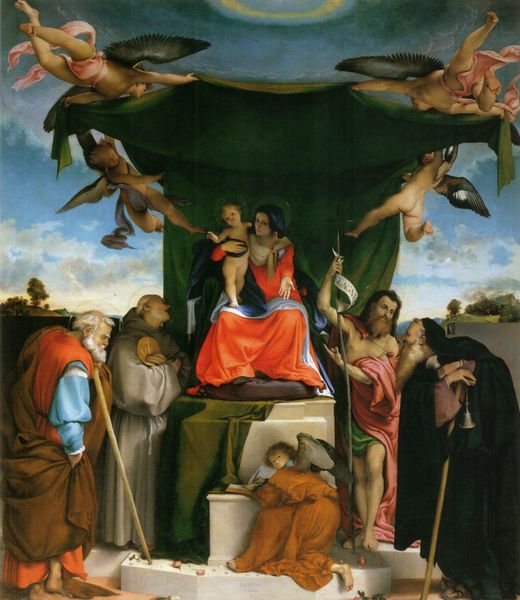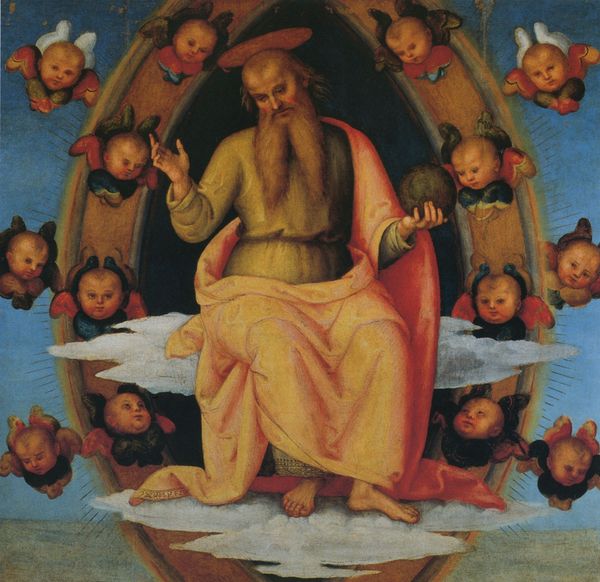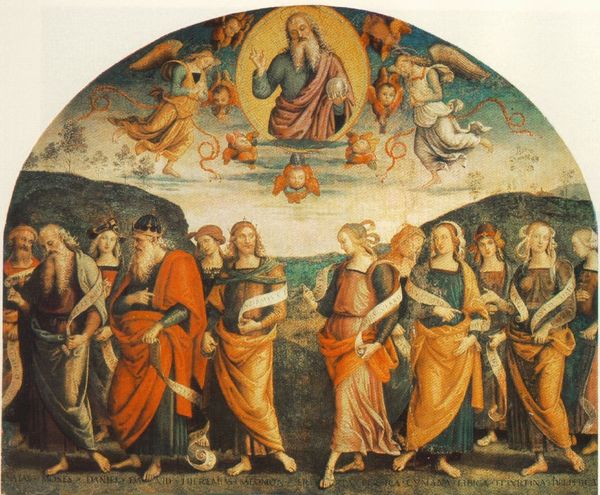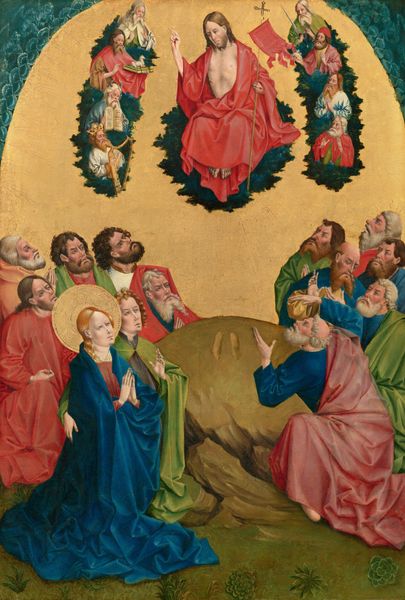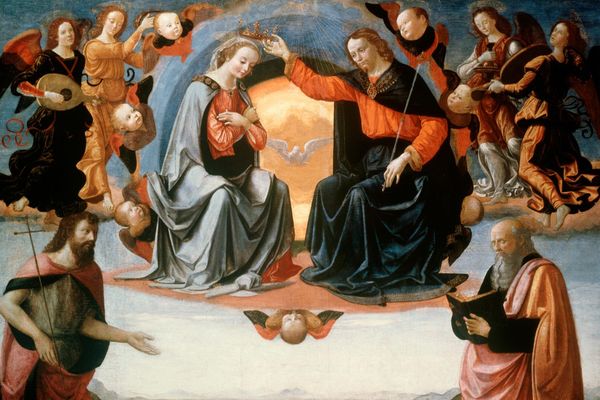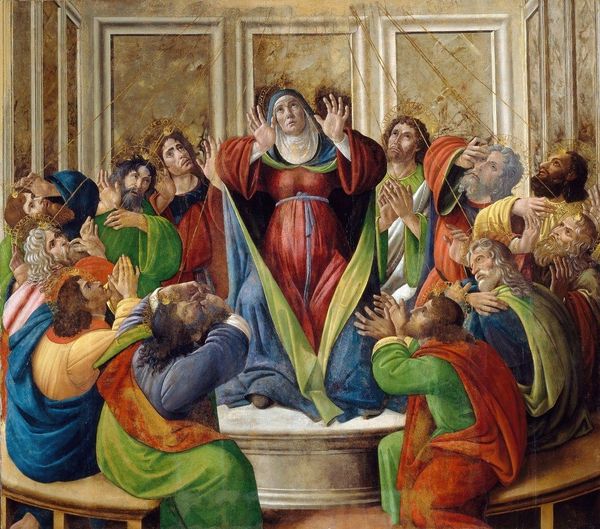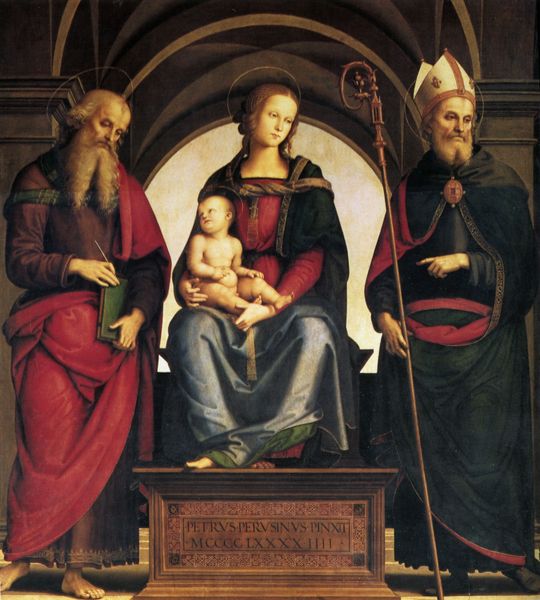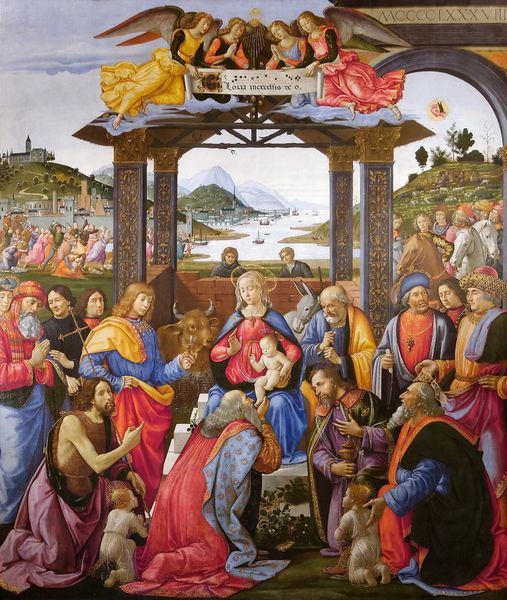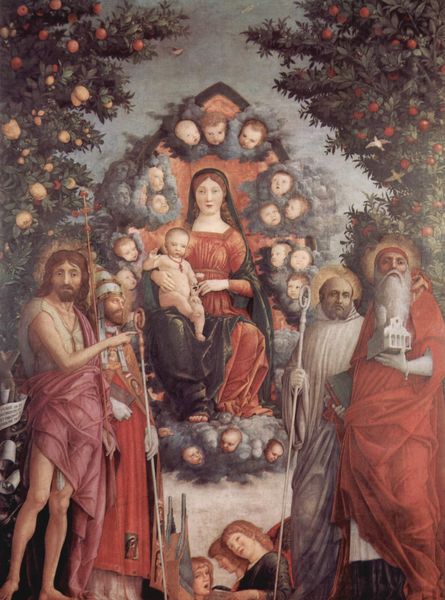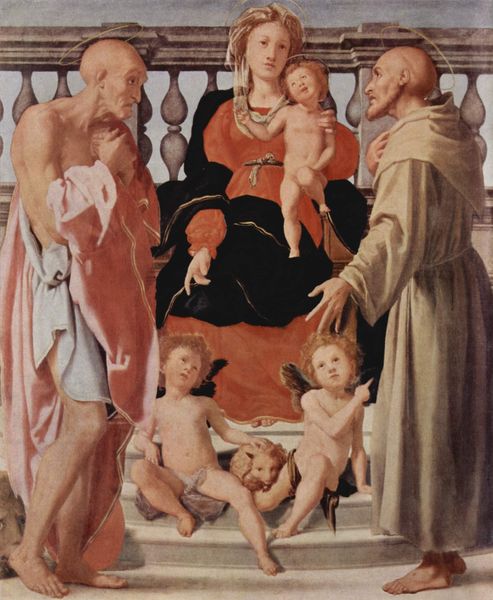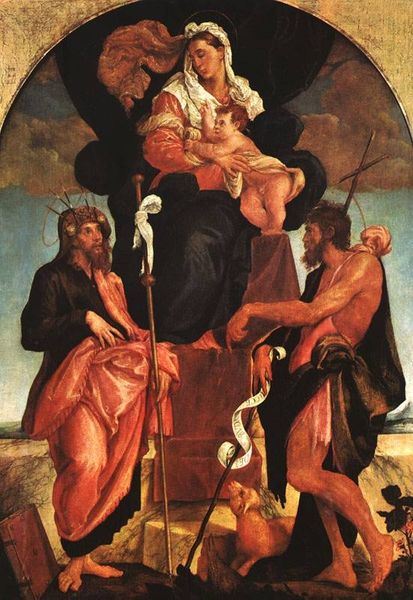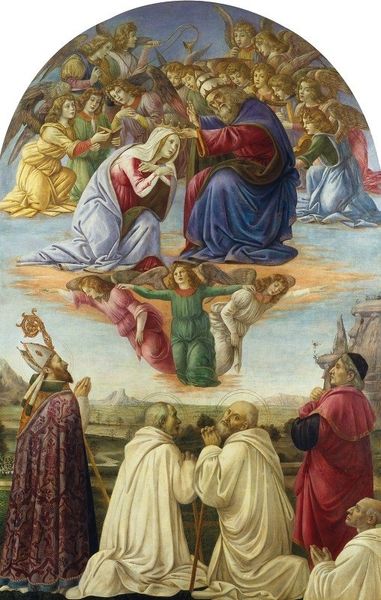
Madonna and Child with Saints and Angels c. mid to late 1510s
0:00
0:00
painting, oil-paint
#
portrait
#
high-renaissance
#
allegory
#
painting
#
oil-paint
#
figuration
#
oil painting
#
history-painting
#
italian-renaissance
#
portrait art
Dimensions: overall: 155.7 x 135.6 cm (61 5/16 x 53 3/8 in.) framed: 194.3 x 172.1 x 7.6 cm (76 1/2 x 67 3/4 x 3 in.)
Copyright: National Gallery of Art: CC0 1.0
Curator: Immediately striking are the bright, almost translucent colours of this oil painting. Editor: Yes, and how it stages the hierarchies of the Church and powerful families! We’re looking at Luca Signorelli's "Madonna and Child with Saints and Angels," which dates from the mid to late 1510s. It’s a quintessential example of High Renaissance ideals. Curator: And speaking of "high," let’s not overlook the craftsmanship, particularly in the angels' robes. What sort of dyes did he use, and who did he get to produce such an incredibly vivid colour? I mean look at that saturation. It gives the divine figures a remarkable sense of substance. Editor: Absolutely. I see the work within the context of artistic patronage during that era, it's highly likely the creation of this piece was tied to a particular donor or institution within the church hoping to elevate themselves through the cultural capital art conferred, in the same way that colours in the image give the characters "substance", the physical act of art creation in the first place would lend authority and status to patrons. It gives the art historical and institutional meaning behind the art. Curator: Good point about cultural capital. How did the guilds organize such labor? Was this commissioned? Those kinds of considerations of manufacture open up so many ways of understanding the artwork itself, away from notions of artistic genius. How long would something like this take to prepare, given that we should count the crafting of the canvas itself as much as applying the pigments? Editor: Precisely! The production also served a clear social function beyond aesthetics; it helped solidify the authority and image of the Church at a critical historical moment when it needed that power in the public sphere. Curator: So by emphasizing the materiality and labor that go into this artwork, we expose more broadly that artistic and cultural production is inherently work. I think sometimes visitors just walk by assuming someone just *painted* it and disregard what a large, communal task the construction of these works was! Editor: A community engaged by one with access to and commissioning the final product; an excellent lens. So much to think about with the cultural implications and impact on its viewers. Curator: Yes, so very much… thank you for putting it in perspective.
Comments
No comments
Be the first to comment and join the conversation on the ultimate creative platform.
